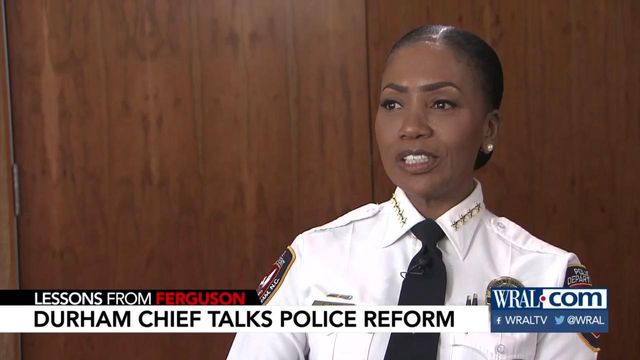Durham police's 2-step focus after Ferguson: Build bonds to prevent crime, earn trust
In a confrontation still not fully fleshed out, Ferguson Police Officer Darren Wilson shot and killed unarmed 18-year-old Michael Brown. It touched off emotional protests and tense encounters with police around the nation, including in Durham.
Posted — UpdatedIt touched off emotional protests and tense encounters with police around the nation, including in Durham.
“Despite what the encounter was about, the aftermath is what became the story,” said Durham Police Chief C.J. Davis.
Ferguson birthed the Black Lives Matter movement. Davis was with the Atlanta Police Department at the time.
It was clear, she said, that Ferguson’s black community had a strained relationship with the police department.
“The time to create a relationship or to say that you can trust me is not on the heels of a critical incident,” Davis said.
Although Wilson was cleared of criminal wrongdoing in Brown’s death, the Justice Department’s investigation found systemic racial bias in Ferguson's police department.
That volcano.
A 2015 report by the U.S. Department of Justice showed that in 88 percent of cases where Ferguson police used force, the suspect was black, as were 93 percent of people arrested.
The report also accused police of targeting and ticketing black drivers to get revenue for the city.
“Whether a person has a recording device or not, you are always watched, and your behavior is very important to us,” Davis said.
Durham's response to the national furor comprises two steps: Build bonds to solve crimes but also to earn the community’s trust.
“Not so much looking at how can I put somebody in jail, but how can I keep them out of jail?” Davis said.
In practice, that means new programs like the misdemeanor diversion program to help young people who commit low-level crimes keep clean records and ending random checkpoints.
Under Davis, crime has fluctuated in the Bull City.
This year, homicides are up nearly 30 percent.
When asked whether efforts to push community engagement hurts crime prevention, Davis said there are multiple ways to stop crime.
“Our crime is a challenge, but at the same time we have been very effective in finding other ways to fight crime as opposed to targeting communities,” she said.
They’re lessons from the fury that spilled out on America's streets five years ago.
• Credits
Copyright 2024 by Capitol Broadcasting Company. All rights reserved. This material may not be published, broadcast, rewritten or redistributed.






